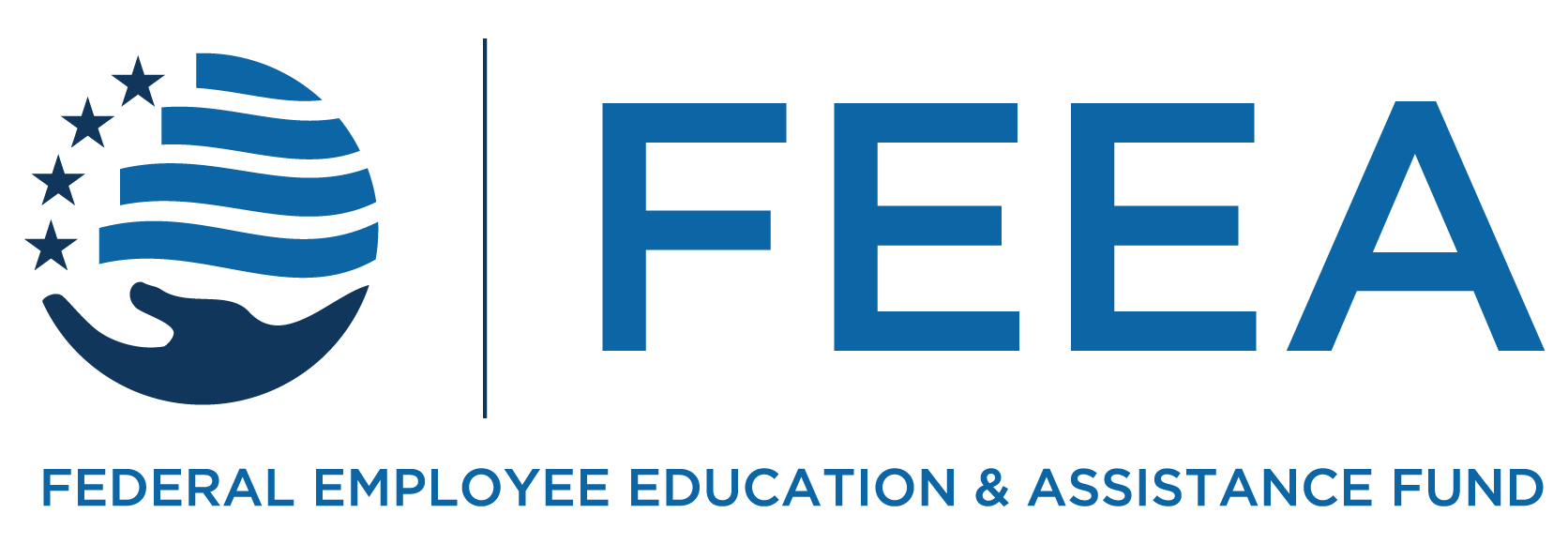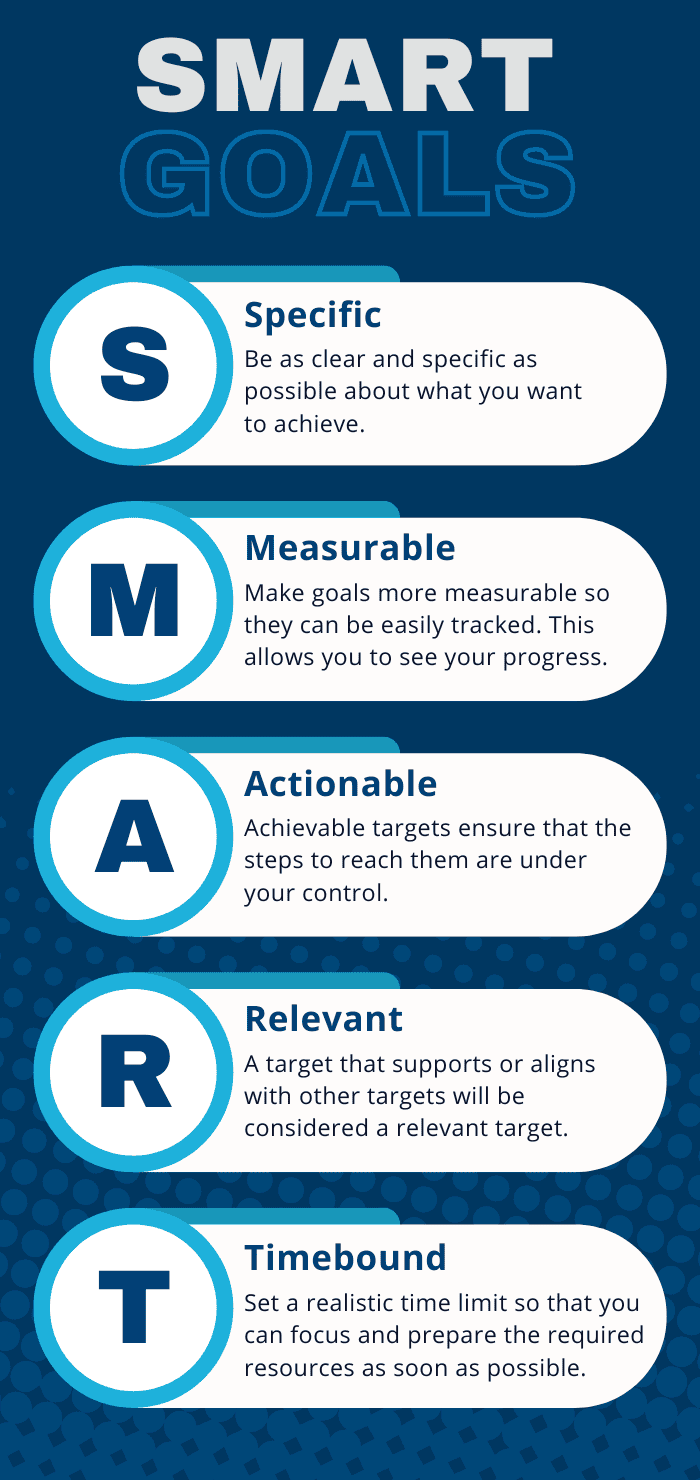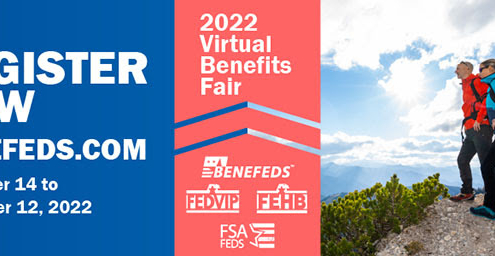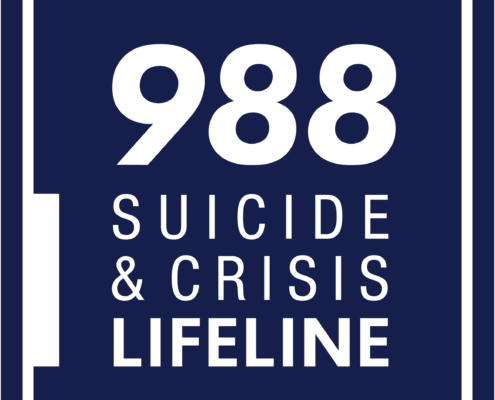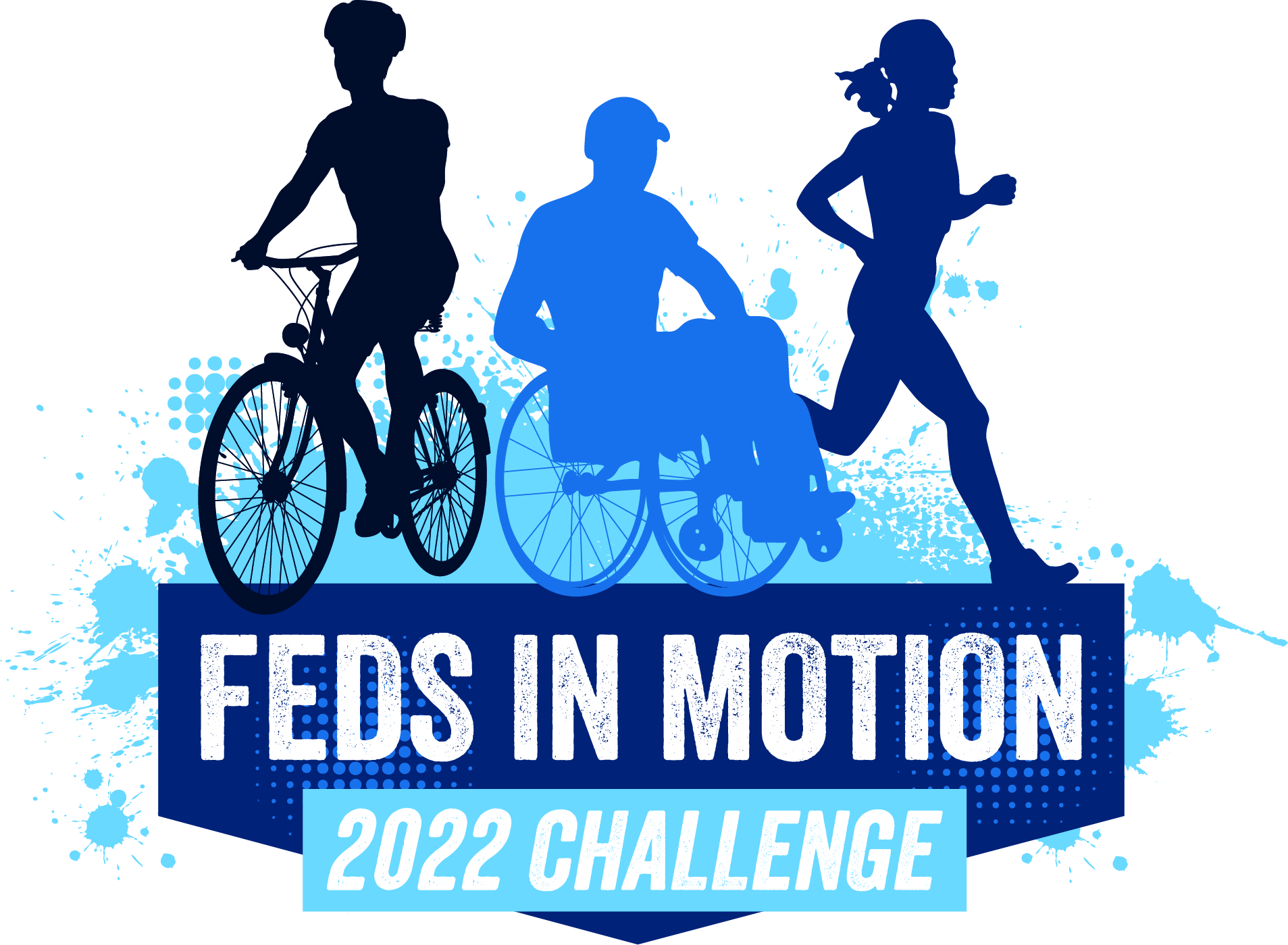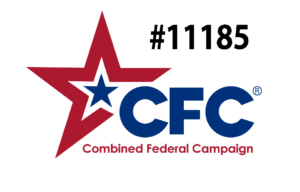Empower Your Wellbeing: Our 3 experts share how to set SMART Goals and crush them during the Feds in Motion Challenge
As the 4th Annual Feds in Motion Challenge approaches, kicking off on May 1st, many of us are brimming with excitement to lace up our sneakers, hit the pool, or explore new ways to move our bodies. But with good intentions often comes the challenge of staying motivated and achieving our goals.
Last year year during the Challenge I set a target to add to my weekly running routine. While I hit my other movement targets, I missed out on my running goal.
So, why was I able to follow through with some goals while others were left behind?
At the start of the new year its estimated that 44% of Americans set goals or resolutions, but according to a Marist poll, just 9% successfully follow through with the entirety of their goal.
Unlike your resolution at the start of the new year it’s not all doom and gloom. With the right plan, you can set yourself up for success on your upcoming Feds in Motion journey.
Joining us in the conversation:
Picking the Right Goal
“Most resolutions or goals are born out of a recognition that we are engaging in a habit or pattern that is not healthy, or that is a barrier to being authentic to our values and recognizing our potential or purpose,” said Dr. Monica Jackman, an occupational therapist who works with both children and adults.
So, what makes the “right” resolution? “From an occupational therapy perspective, a “right” resolution is a behavior, action or way of responding to life’s challenges that is meaningful and aligned with personal values and interests,” said Dr. Jackman. “In turn these goals can be realistically integrated into your life routines as a healthy habit.”
Many people set goals with good intentions but they make four common mistakes which can prevent them from achieving them:
“The best thing for picking the ‘right’ goal is being realistic and starting small,” said Chelsea Mock, a registered Dietician and Health & Fitness Coach. “Many clients will choose weight loss and that’s not something that is going to happen overnight. Pick small and tangible one-day-at-a-time goals to start with that will aid you in getting to what you are trying to achieve long-term.”
Create Your Plan
Some may recognize the SMART Goal strategy from your time in college or even projects at work. SMART Goals are specific, measurable, achievable, relevant, and time-bound. With a specific set of criteria, SMART Goals can help ensure that objectives are clearly defined, attainable and within a defined timeframe. Most importantly, by working through each step, you can identify instances where a priority or resource may not align with your overall goal.
Checkout our printable SMART goal workbook to aid you in your 2024 Feds in Motion goal setting.
A good example of how a SMART Goal can apply in the development of your own goals is with the example of my failed goal of adding to my weekly running plan. This goal now makes its triumphant return to the goal list for 2024!
By applying the SMART Goal methodology, you can flesh out the specifics of the goal, the who, what, when, why, how, etc, something I did not previously do in 2023. Without a detailed roadmap for this goal, my enthusiasm quickly waned and fizzled out with little fanfare.
Here is what setting a SMART Goal could look like:
The Feds in Motion Challenge is a springboard for long-term health and wellness. Here are some tips to keep the momentum going:
- Habit Stacking: Pair your new activity with an existing routine. For example, listen to a podcast while walking or do some stretches while your coffee brews.
- Find a Community: Join a walking group or connect with friends who share your fitness goals. Accountability can be a powerful motivator.
- Be Kind to Yourself: Don’t get discouraged by setbacks. View them as temporary detours and recommit to your goals the next day.
By setting SMART goals and adopting these strategies, you can transform the Feds in Motion Challenge into a springboard for lasting health and well-being!
Leaping Over Barriers
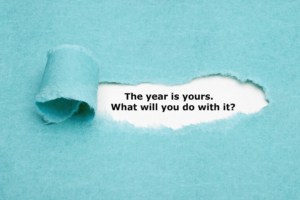
Just because it is the start of the Challenge, doesn’t necessarily mean it is the right time for all of your goals.
“So much of what we do is so heavily influenced by our environments, whether physical, social, or temporal,” says Dr. Jackman. “For example, if we make a goal to start running around our neighborhood for exercise in the middle of winter, we may never achieve this goal because the timing and location aren’t conducive to success for a beginning runner.”
You don’t have to wait until spring to start running, but you will need to take into account the various barriers that may affect your plan when developing your SMART Goals. This may mean finding an indoor track during the extreme cold, waking up a little earlier to get a run in before getting the kids ready for school, working through the anxiety of a challenge that is outside of your comfort zone, or working with a trainer to help you develop a safe running and stretching routine.
Everyone has different barriers, but we all need to make an effort in some way to structure and organize our time according to our values, barriers, and overall goals.
Another barrier to success on your journey is in the day-to-day consistency with your new goal or routine. “Habit stacking is a great way to add something to your routine,” said Molly Ontiveros, a licensed therapist and director of wellness programming for high school students.
So, what does habit stacking look like? “If you want to drink more water, have a cup of water while your coffee is brewing. If you want to meal prep more, save a specific TV show that you only watch while meal prepping,” explains Ontiveros. “Rather than cutting out junk food, add something like carrots to your plate alongside the chips, or fruit alongside chocolate.”
Find a Community
Setting up a community and space supporting towards reaching your goal can lead to better success than going at it alone.
Accountability from those joining on your journey is key, explains Mock. “Community equals accountability. That accountability can be motivating to have someone check in and make sure everything is ok.”
“I think the new year is a great marker for reflecting on the past year’s wins and challenges and setting intentions or goals for the year to come,” said Ontiveros. “Doing that with friends or family members can be a great exercise. Asking each person to identify their ‘win’ for the past year before even focusing on the next year can be pretty challenging. Throughout the year, sharing wins with your community can be an excellent way to stay motivated to keep up a change.”
What If You Miss Your Goal?
New Year’s resolvers are a great example. Those setting resolutions at new years typically report making the same pledge for 5 years or more before they manage a 6-month success. For those who fail this year, 60% will make the same resolution again next year. But it’s not all doom and gloom, right? That’s why you have read this article to this point, to work towards success with your goal(s) during the Challenge in 2024.
But, even with a well thought out and developed goal there will be tough days or even weeks or months. Here are the final thoughts from our experts as you embark on your journey.
On behalf of all of us at FEEA, we would like to thank you for joining us for the Feds in Motion Challenge!
The information provided in this piece is for your convenience and informational purposes only and not to be construed as professional advice. FEEA and its coauthors and sponsors are not liable for any losses or damages related to actions or failure to act with regard to the content in this piece.
Would you like to reprint this piece in your agency human resource, federal employee association, or union local newsletter? You can do so at no cost by contacting [email protected] with your request.
Subscribe to FEEA’s Newsletter
Checkout our printable SMART Goal workbook to aid you in your 2024 goal setting.
